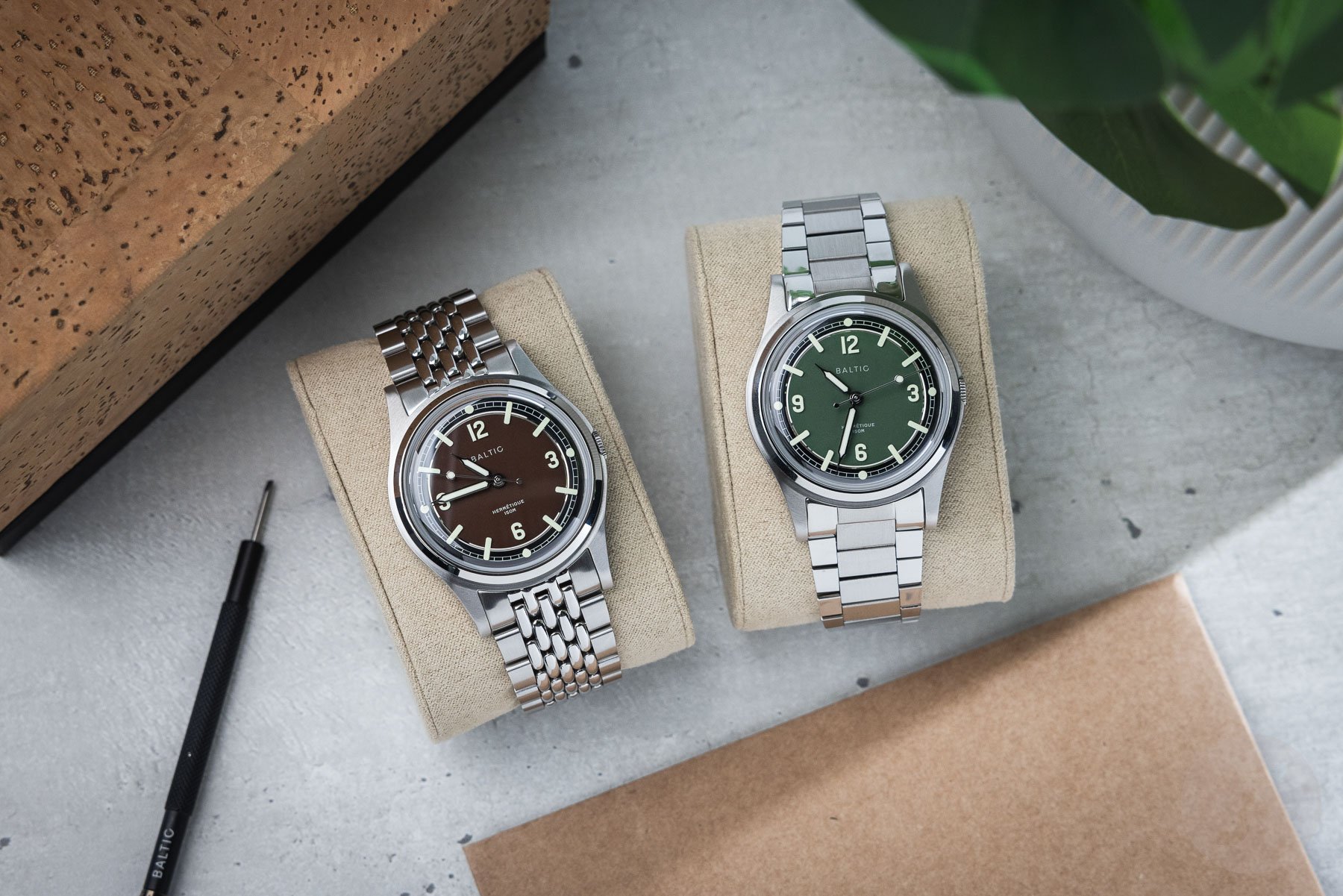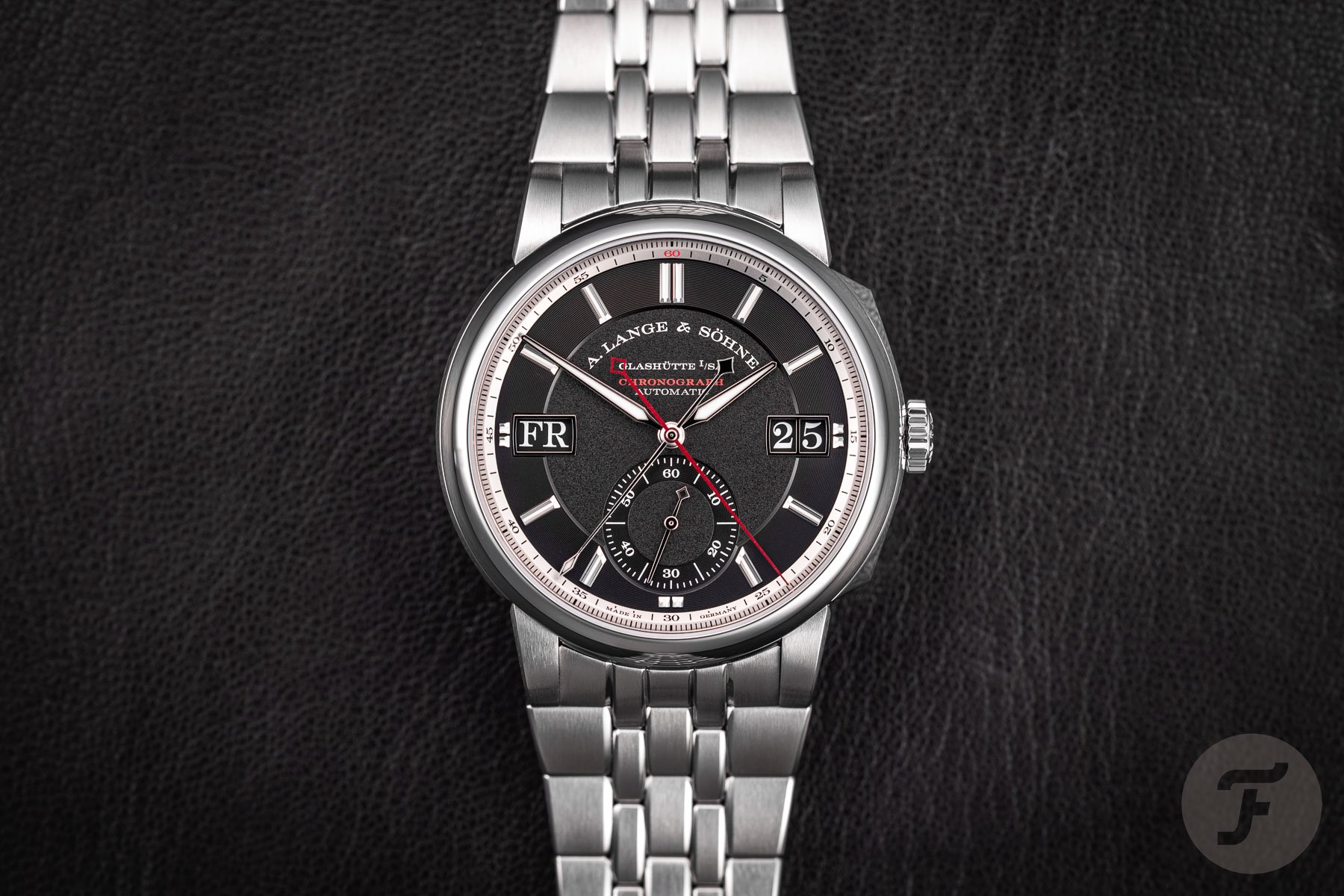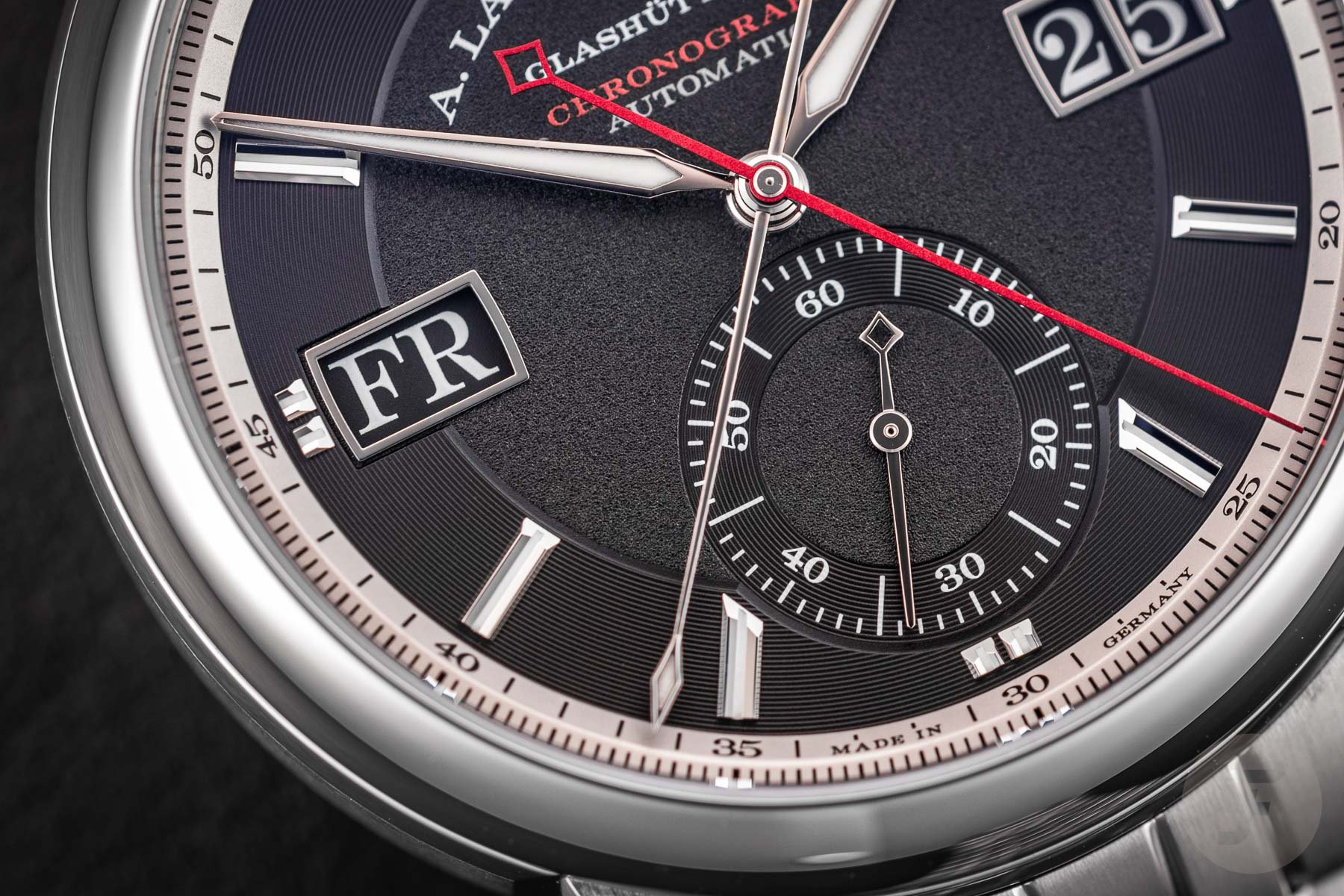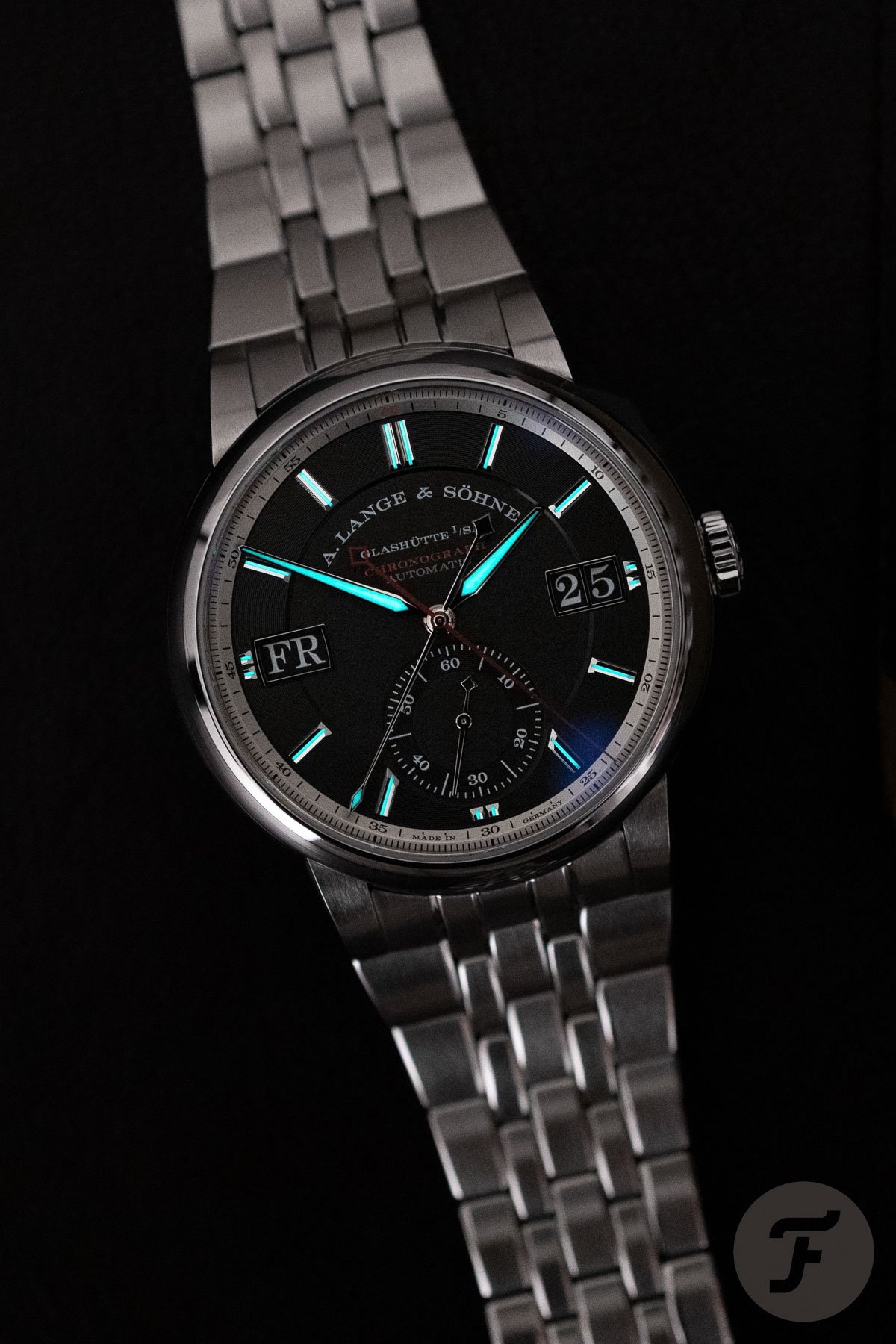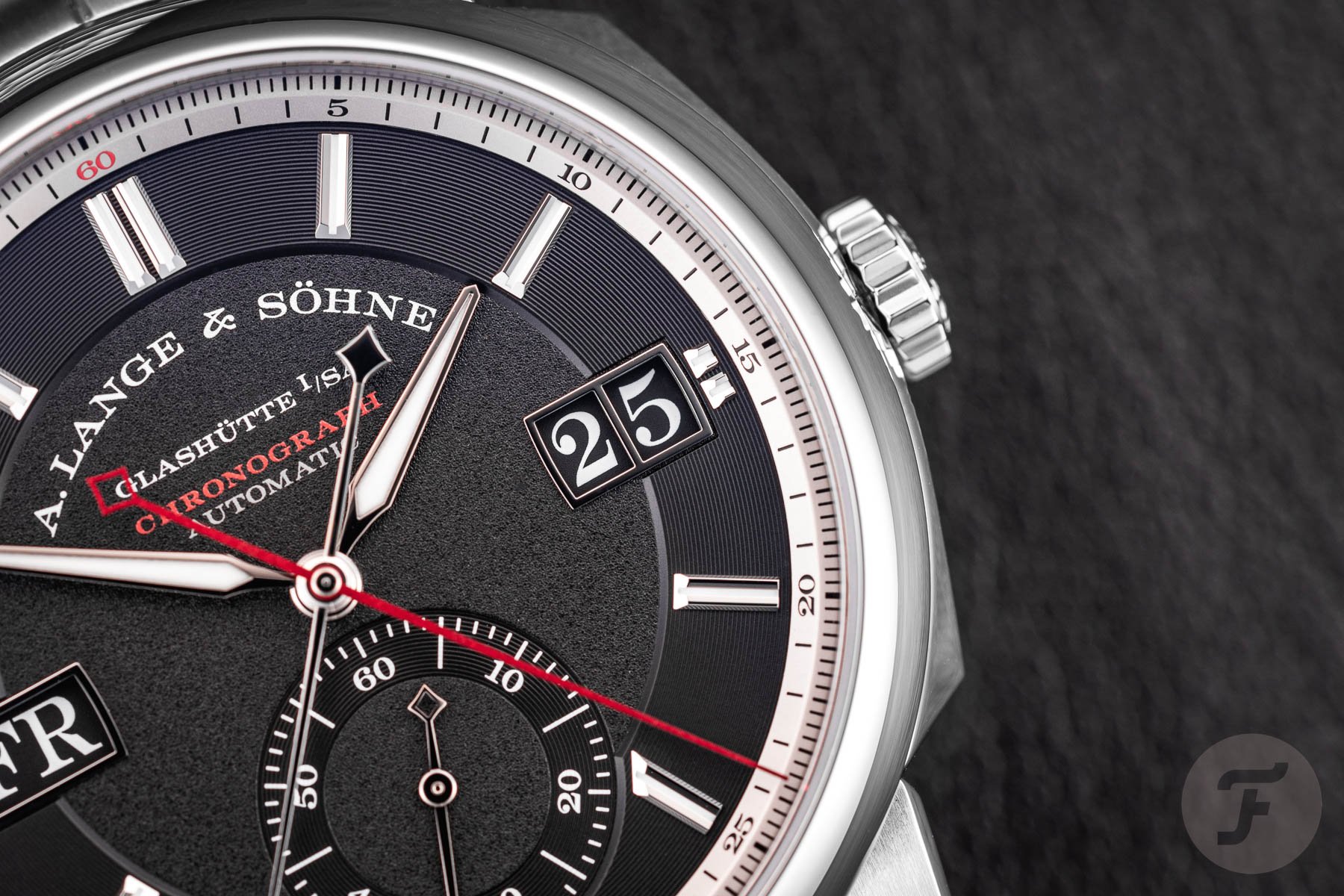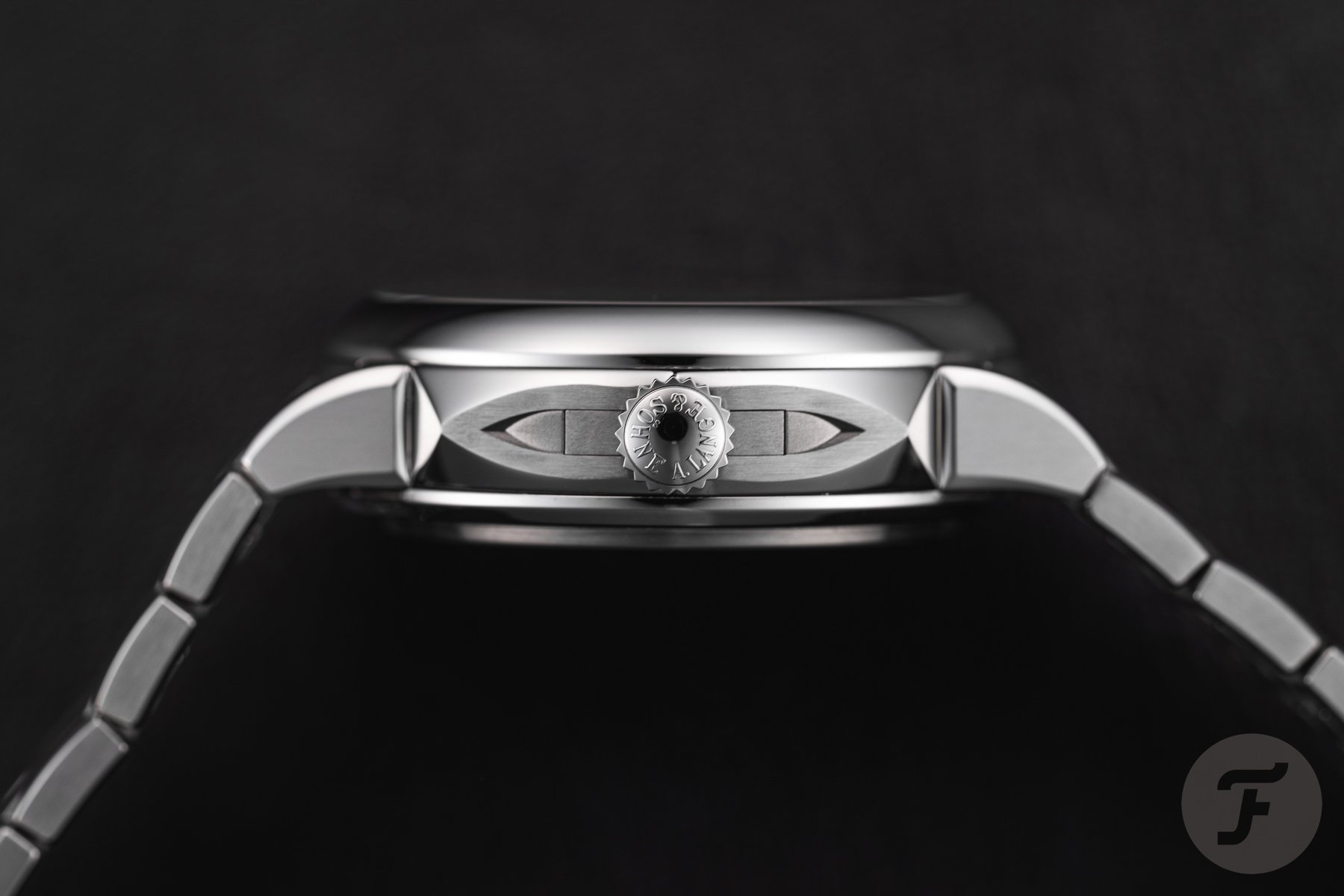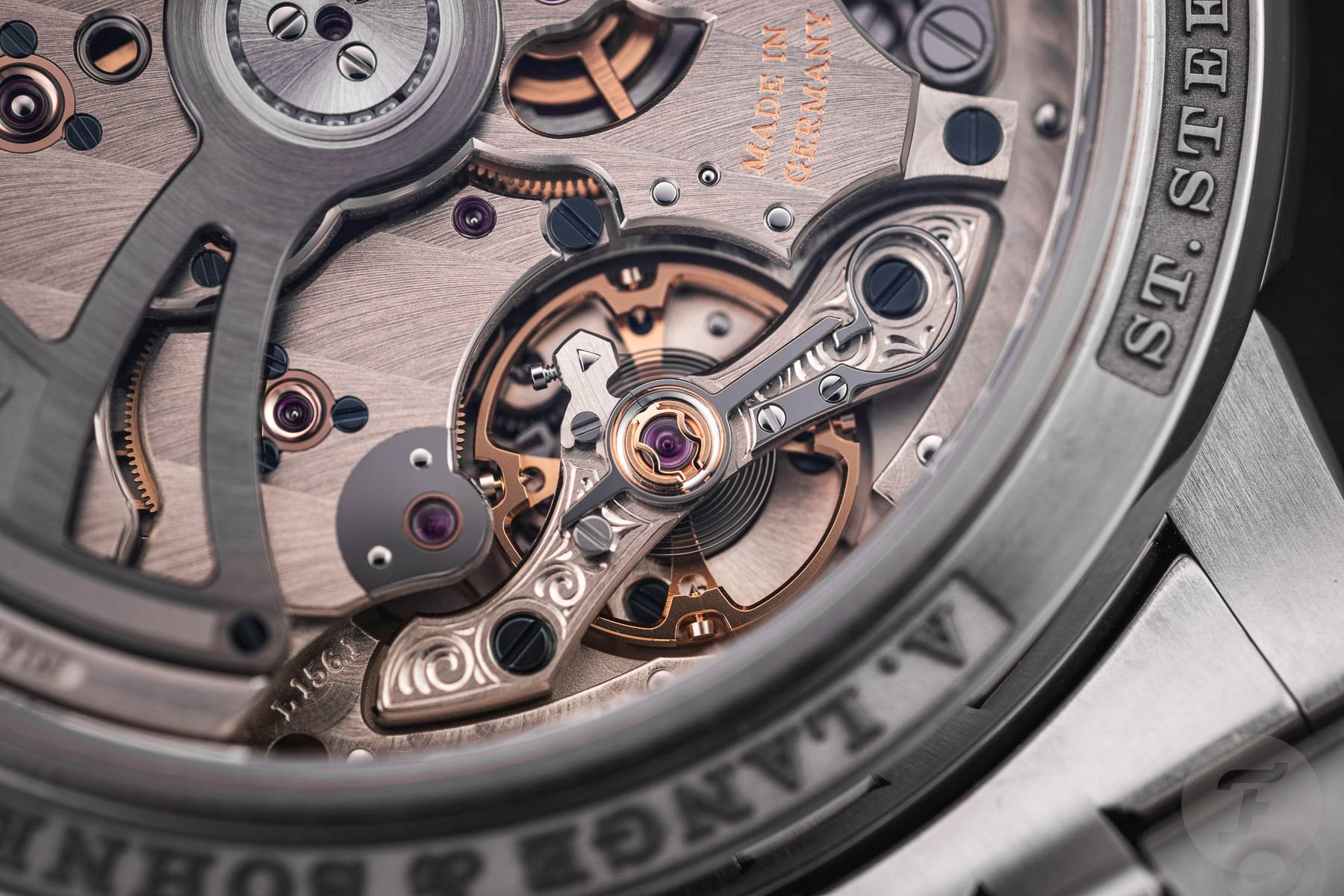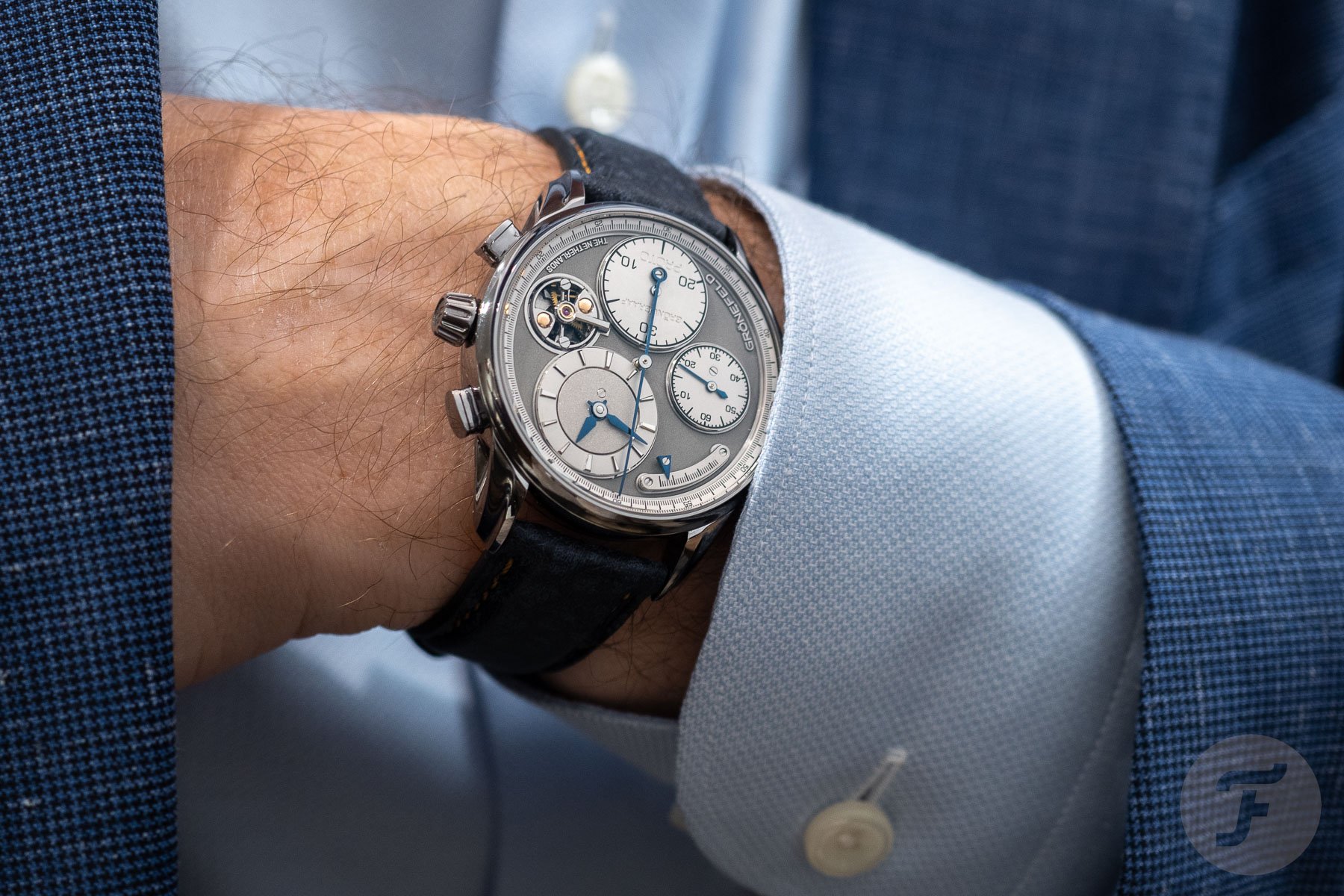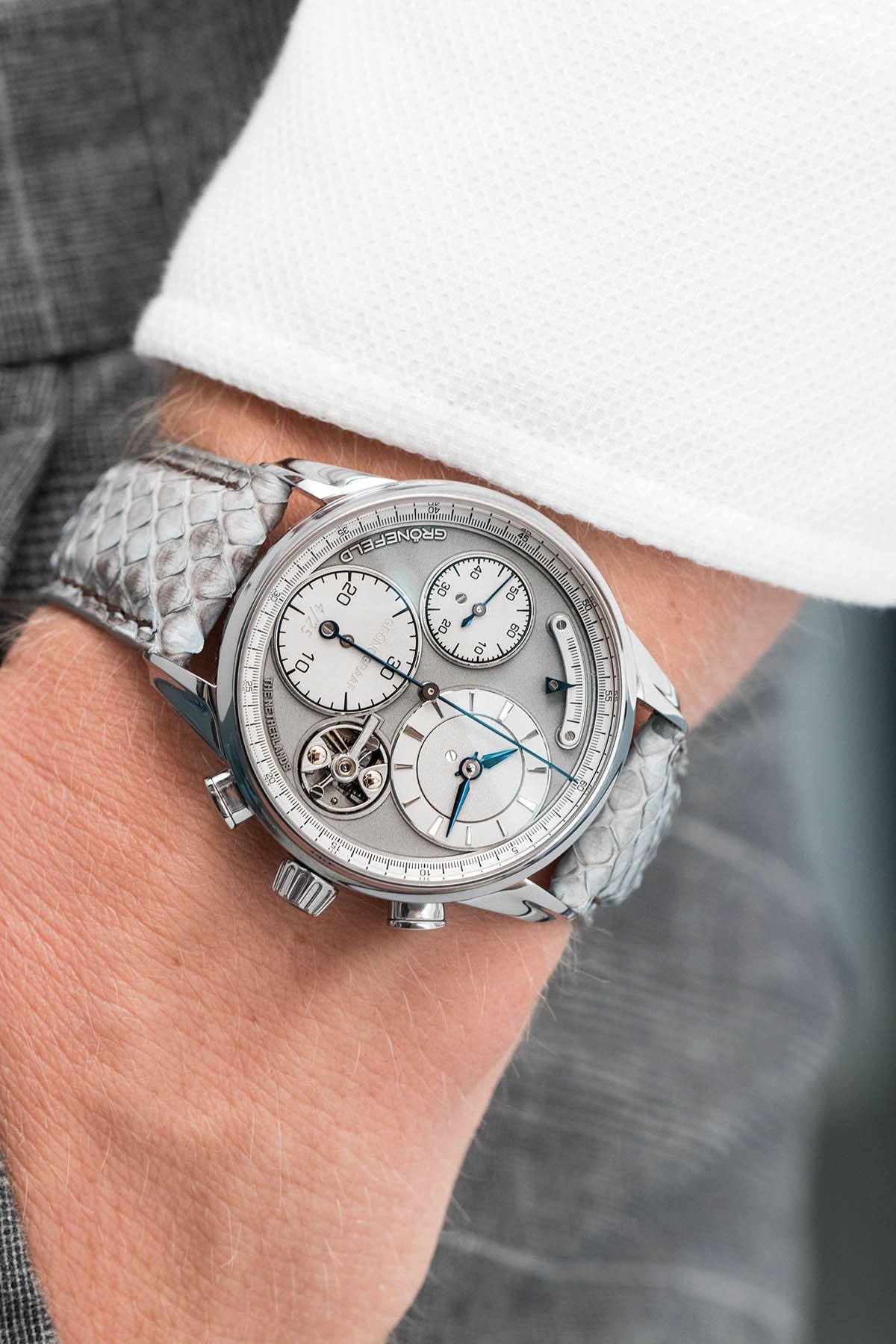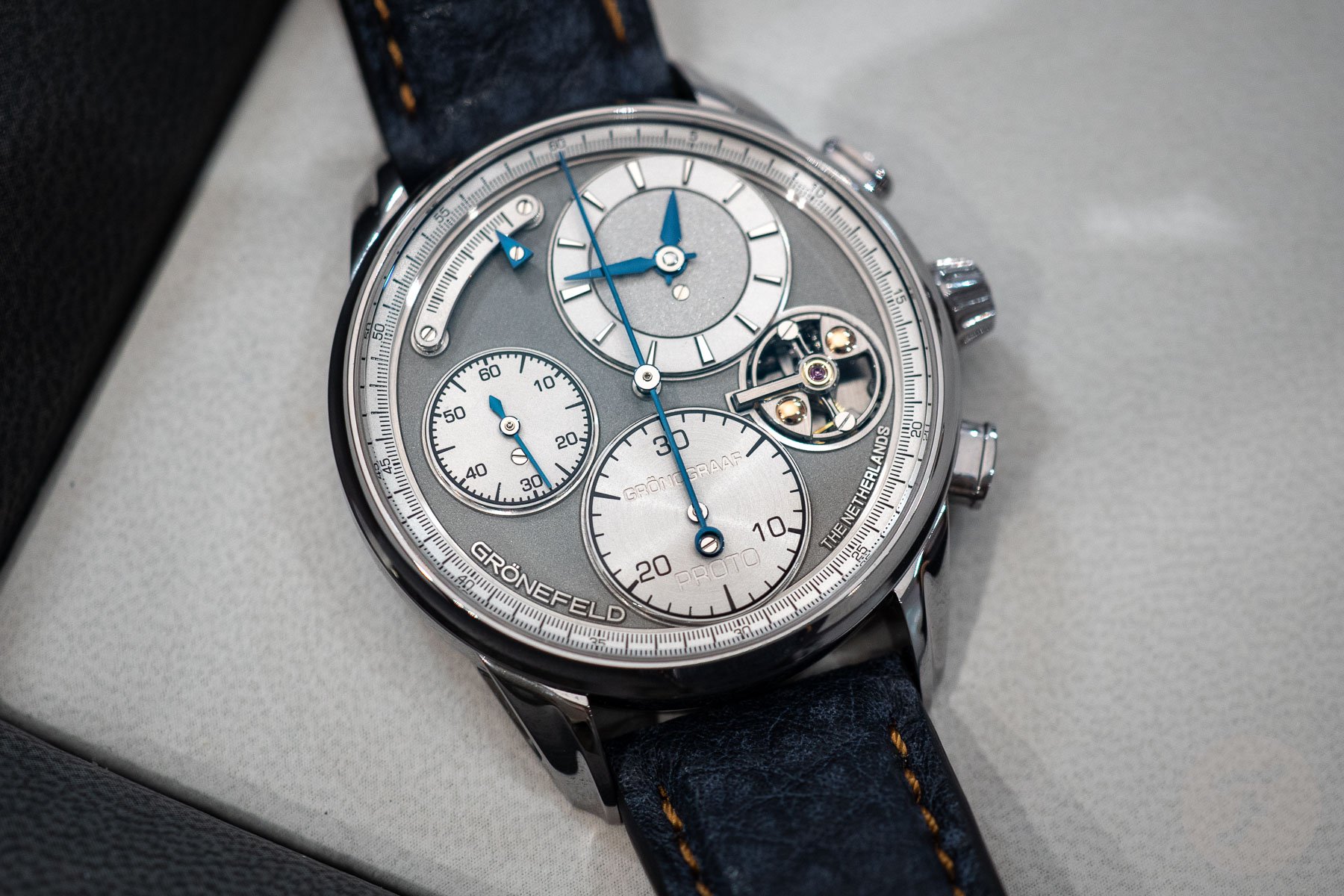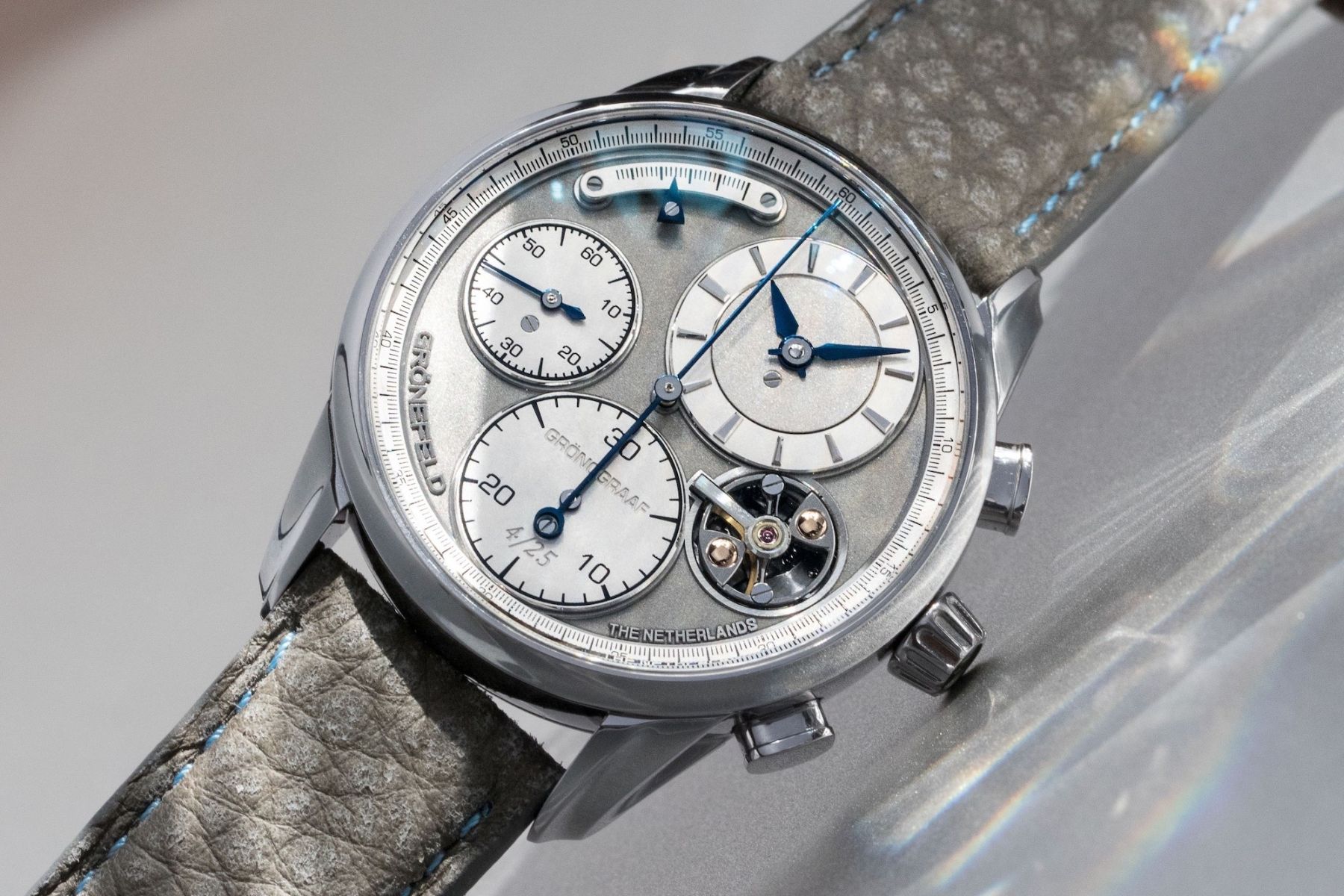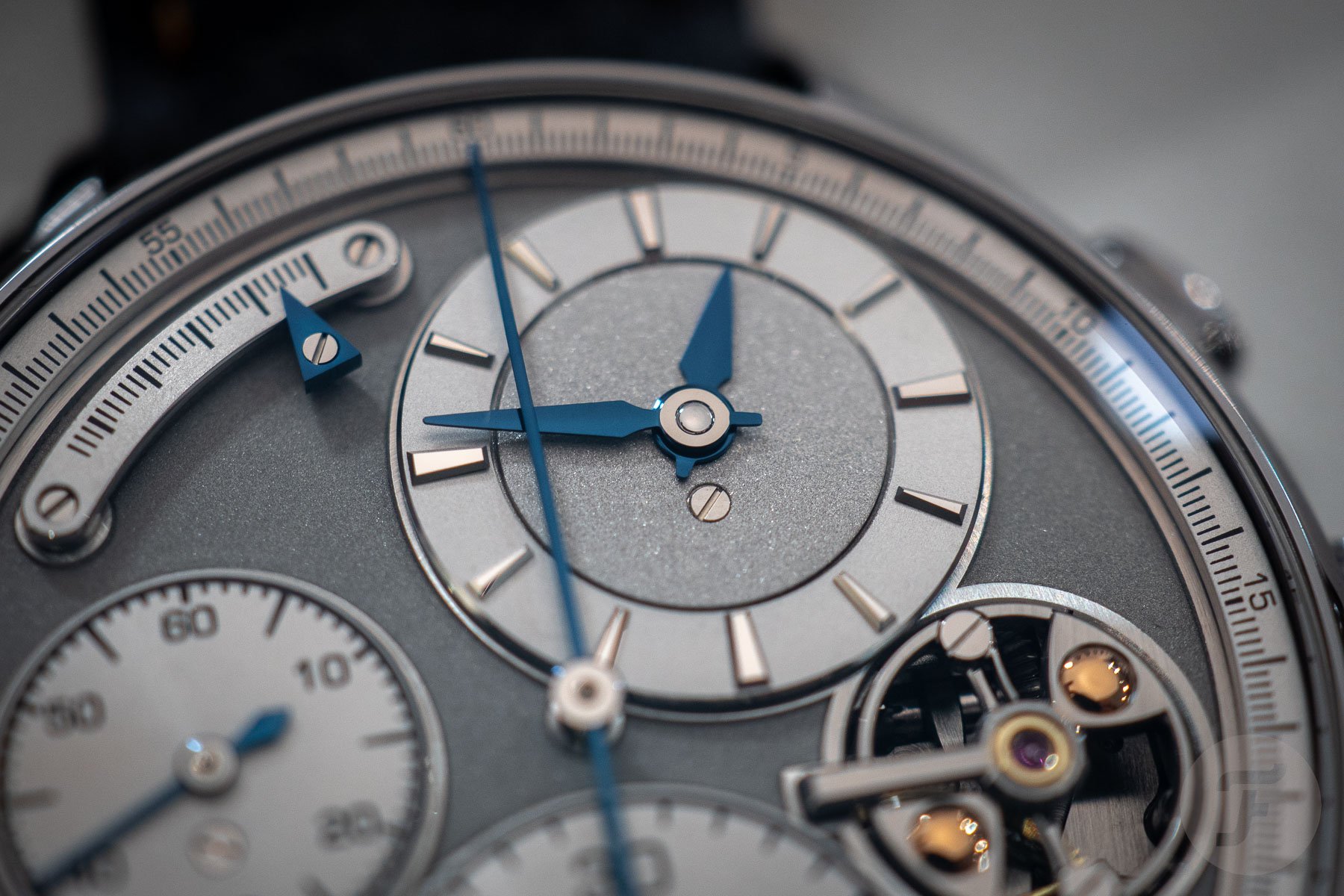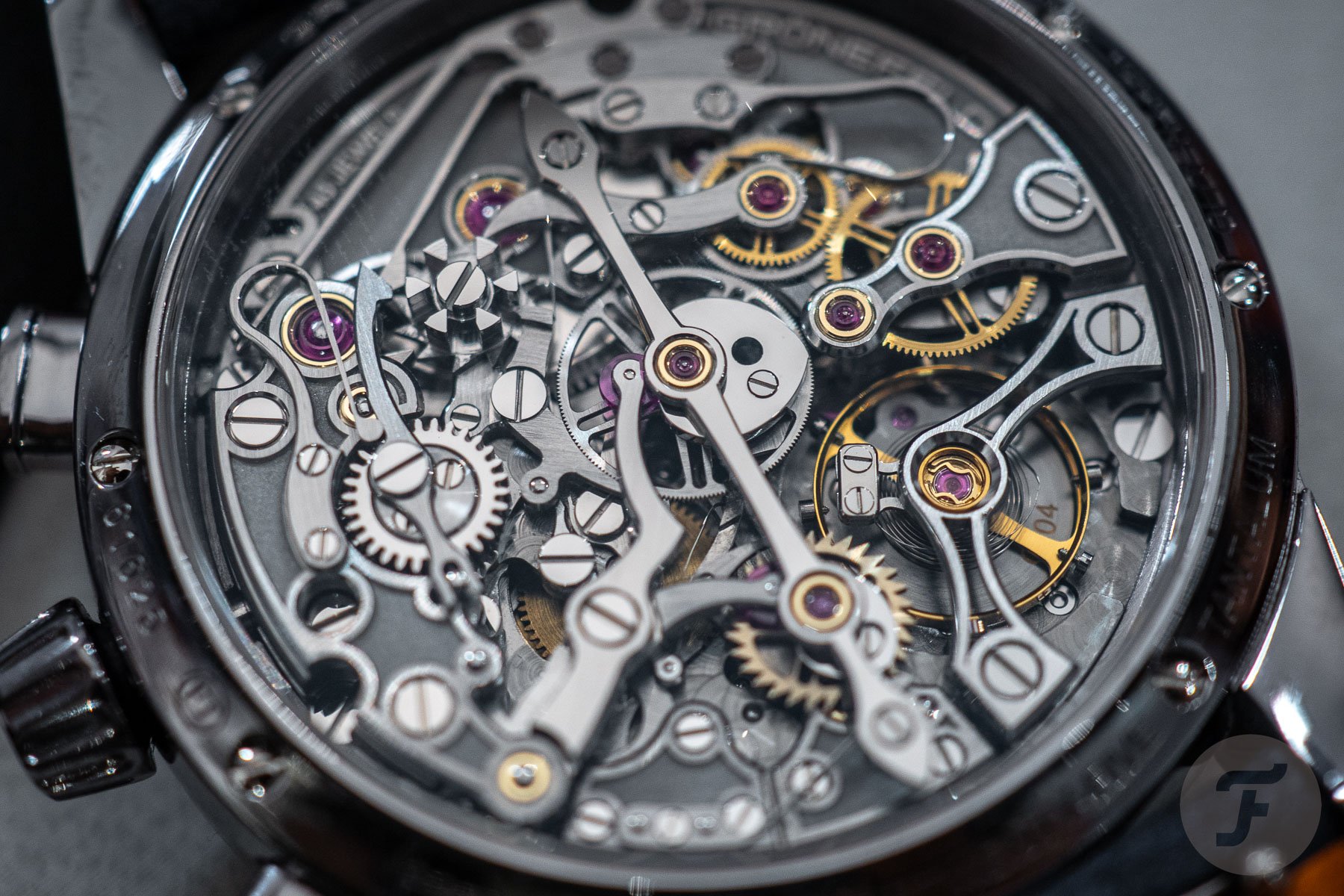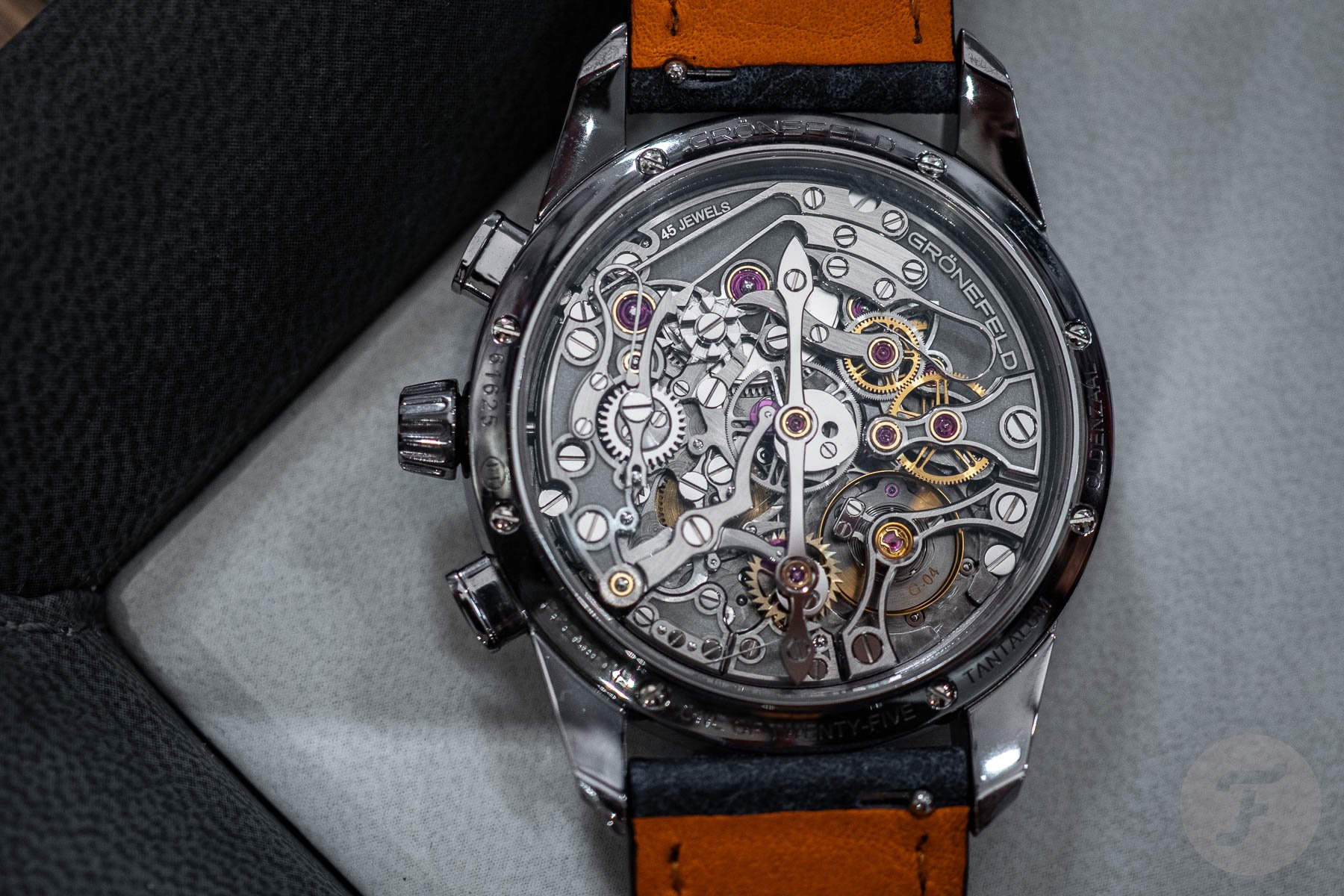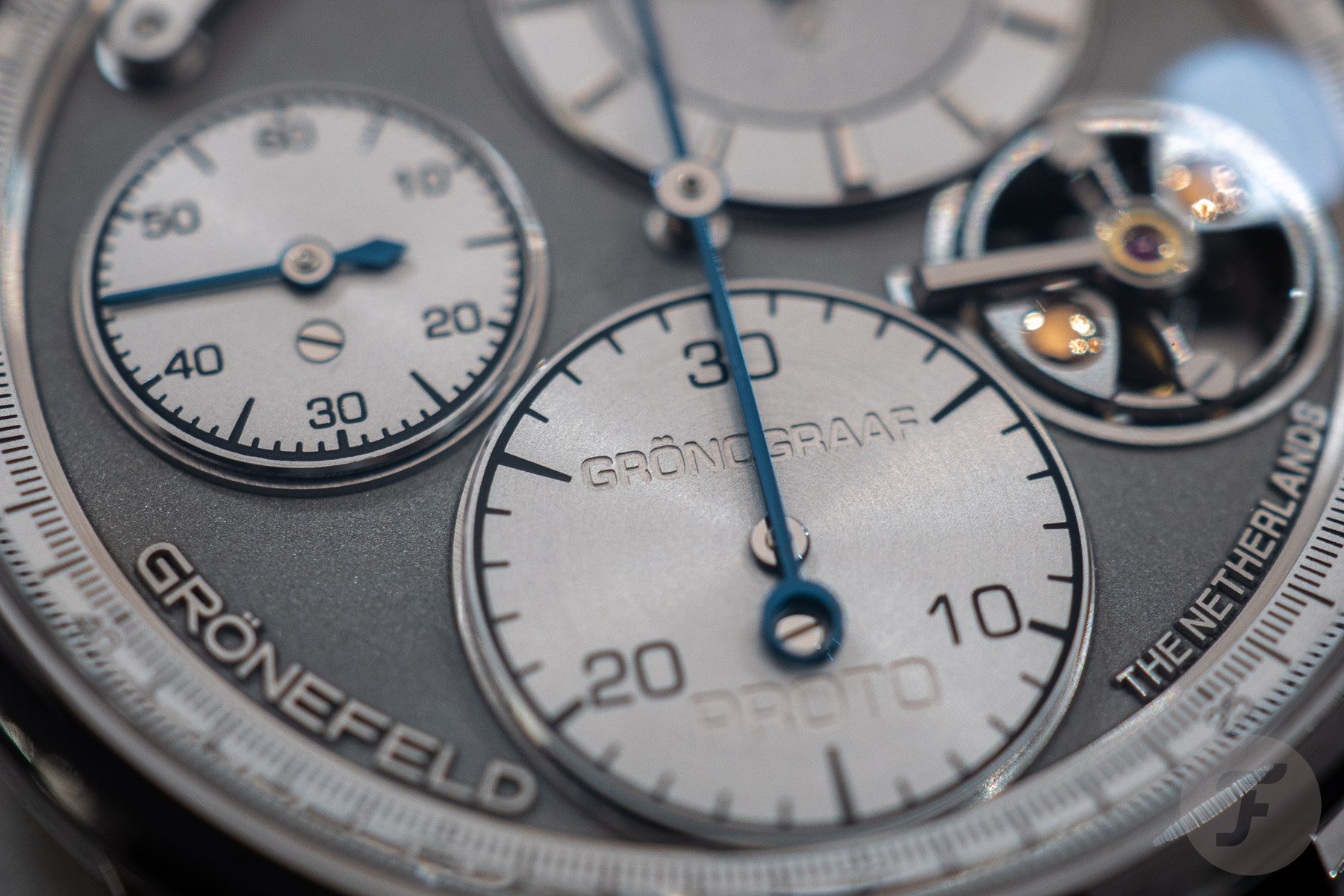Sunday Morning Showdown: A. Lange & Söhne Odysseus Chronograph Vs. Grönefeld 1941 Grönograaf
When it comes to perpetuating the values of Haute Horlogerie, longstanding brands like Breguet, Audemars Piguet, Patek Philippe, and Vacheron Constantin never let us down. It’s thanks to such brands and their persistence that mechanical watchmaking is at the high level that it is right now, and many of them will keep developing new technology for the foreseeable future. But nowadays, there are also some new kids on the block, such as MB&F, Urwerk, and HYT. In many ways, these fresh-faced brands are bold and daring, and they have a knack for developing things we’ve never seen before. In today’s Sunday Morning Showdown, we’ll put watches from both of these schools up against each other — the A. Lange & Söhne Odysseus Chronograph and the Grönefeld 1941 Grönograaf.
Daan will defend the A. Lange & Söhne Odysseus Chronograph. This clean and classic contender stands for tradition while also incorporating state-of-the-art technology. In the other corner, we have RJ, who’ll advocate for the Grönefeld 1941 Grönograaf. With its more daring design, sleeker finishing, and mechanical creativity, it represents the forward-thinking independents. Get ready for a high-horology edition of Fratello’s Sunday Morning Showdown.
Last week’s Sunday Morning Showdown
But first, we’ll take a look at what happened during last week’s showdown. We put the Baltic Hermétique Tourer up against the Christopher Ward C65 Dune Automatic. The comments seemed to be more in favor of the Hermétique’s looks. But when looking at the voting results, it seems like the C65 Dune still held its own pretty well with its superior finishing and refinement. As of now, Baltic’s offering has pulled in 51% of the votes, leaving Christopher Ward’s contender with 49%. Which one would you choose when you take into account that the Hermétique costs two-thirds of what you’d pay for the C65 Dune? If you want, you can still add your comments and cast your votes. But make sure to come back afterward for this week’s high-horology battle.
Daan: A. Lange & Söhne Odysseus Chronograph
Even though RJ picked the Odysseus Chronograph as his favorite watch from Watches and Wonders this year, I’ll be defending it during today’s Sunday Morning Showdown. I’m simply a sucker for more classic-looking watches. Icons like the Cartier Santos, JLC Reverso, Omega Speedmaster, and Rolex Explorer are all part of my collection. It somehow seems like I just can’t let go of that more traditional design language. Of course, I enjoy the occasional encounter with watches from brands like MB&F and HYT. But even if I had the money, I don’t think I would spend it on such a modern-looking watch.
That’s why I’ll be on the Odysseus Chronograph’s side today. This watch shows what the classically minded designers at A. Lange & Söhne think a contemporary sports watch should look like. As the name suggests, the original Odysseus was a strong-looking and capable watch with its mainly brushed case and bracelet. The dial layout was straightforward, but with its big day and date windows, it was still very recognizable as a Lange creation. The incognito day/date correctors on the right side of the case were also a small hint at the advanced technology hiding inside.
Is that even a chronograph?
When I first saw the new Odysseus Chronograph, I had to look twice to figure out that it was a chronograph at all. As Jorg described very well in his introduction article, the Odysseus Chronograph only adds two additional hands to the original design. Apart from the size, the case design and dial layout stayed precisely the same. Just like Jorg, I also very much enjoy Lange’s minimalistic approach to developing a chronograph. All that was necessary was a red hand for the chronograph seconds and a silver hand to record up to 60 minutes.
The two additional hands fly over the dial, which, apart from its color, hasn’t changed one bit from the original design. Therefore, the dial is still very well organized, uncluttered, and easy to read. The red chronograph seconds hand and text on the dial add to the strong and sporty character of the Odysseus Chronograph. It’s clear that the designers and watchmakers at A. Lange & Söhne have put a lot of their experience into the development of this new chronograph.
Same pushers, new functionality
It all seems so simple, but Lange had to develop a completely new caliber, the in-house L156.1 Datomatic, to make this all happen. The modest pushers are still there, but this time they have an additional function. Now they can be used to operate the chronograph, but when you pull out the crown, you can also still adjust the day and the day with them. Plus, when you reset the chronograph via the 4 o’clock pusher, the red seconds hand will spin once around the dial for every elapsed minute before perfectly syncing with the chronograph minute hand again at 12 o’clock.
This unique reset process is quite a sight to behold, and it’s quite a surprise for a watch that looks so simple. But the new movement inside consists of 516 parts and shows you exactly how impressive this watch really is. What’s also impressive is the manual finishing that’s visible through the exhibition case back. Look, for example, at the tiny hand-engraved waves on the balance bridge. They’re a subtle hint to another one of the impressive features of the Odysseus Chronograph — the 150m water resistance. In conclusion, the A. Lange & Söhne Odysseus Chronograph is a masterclass on how to develop a very impressive watch inside a modest and traditional design. It is a limited edition of 100 pieces and retails for €135,000.
RJ: Grönefeld 1941 Grönograaf
Sometimes I wish that the Dutch would be a bit more patriotic like the French, Italians, English, and, of course, the Americans. We have quite a few amazing watch brands in our country, such as Christiaan van der Klaauw and Grönefeld. But we also have brands like Staudt, Lebois & Co, Airain, Ligure, Van der Gang, Holthinrichs, etc. Basically, then, we have everything from entry-level automatic watches to some of the finest examples of Haute Horlogerie.
Grönefeld falls into that latter category, and owners/brothers Tim and Bart, who are experienced watchmakers, have worked for many other high-end watch brands. What’s interesting is that the Grönefeld brothers and Anthony de Haas (the director of product development at A. Lange & Söhne) are good friends, and they have worked on projects together in the past. There’s a lot of mutual respect, which is not uncommon anyway in the world of high-end independent watchmakers. Interestingly, A. Lange & Söhne is not independent but belongs to the Richemont Group. I am sometimes still surprised to learn that not everyone is aware of this. On the other hand, it seems that A. Lange & Söhne operates quite independently, not sharing much in common with the other Richemont Group brands.
Dutch and German watchmaking
Compared to the Netherlands, watchmaking is much more embedded in Germany’s culture, it seems. Brands like Nomos are well known among a larger audience, and I guess that the majority of Germans who know a thing or two about watches are aware of the high-end watchmaking brand A. Lange & Söhne. The Dutch counterpart of the German A. Lange & Söhne brand is, without a doubt, Grönefeld.
Then, at least to me, it’s a matter of taste and, in my case, personal connection. Not only does Grönefeld hail from my country, but its headquarters are also in the region where I am originally from. This amplifies the sense of connection I already have with the brand. Now, when it comes to taste, I love the A. Lange & Söhne Lange 1, Datograph, and Zeitwerk, for example. The Odysseus, on the other hand, took me a long time to get used to, and it doesn’t speak to me as much as the aforementioned models. What I do admire about the Lange Odysseus is its chronograph complication. And just like the Grönograaf that I picked for this Sunday Morning Showdown, it’s the animation of the reset mechanism that indicates something special is happening there.
The Grönograaf’s popularity
Last year, Grönefeld introduced its first chronograph watch, the…wait for it…Grönefeld Grönograaf. If you couldn’t tell, this is a play on words, combining the brand name and the Dutch word for the complication.
Upon its introduction, this new Grönefeld watch received an incredible amount of positive feedback. It got so much, in fact, that Grönefeld had to stop taking orders for it due to limits in annual production. Perhaps unsurprisingly, the Grönograaf was selected as the best chronograph in the GPHG 2022 Chronograph category.
A stunning dial
Anyway, the Grönograaf is based on the Grönefeld 1941 design, measuring a modest 40mm wide and just 11.3mm thick. On the stainless steel dial, which features rhodium-plated sub-dials and both frosted and satin-grained surfaces, you will find a decentralized display for the hours and minutes, small (running) seconds at 9 o’clock, a minute recorder at 6 o’clock, and a large central chronograph seconds hand. Then there’s a power reserve indicator at 11 o’clock and the regulator for the reset speed at 3 o’clock.
Chronograph reset mechanism
The fun is in that last component. When you see the chronograph being reset, the speed regulator with its gold weights starts turning, and the chronograph seconds hand returns to 12 o’clock in a very controlled way. This so-called “centrifugal governor” ensures that the reset function is less “aggressive” and that there’s less wear and negative impact on the components. It’s worth noting that this mechanism is usually found in minute repeaters, where it helps control the speed of the chiming sequence. As far as I know, the Grönograaf is the only chronograph to employ this mechanism for the reset process.
The Grönefeld brothers are movement makers
Grönefeld’s G-04 chronograph caliber also utilizes a column wheel and lateral clutch, and it consists of no less than 408 components in total. Just like A. Lange & Söhne’s hand-wound calibers, the Grönograaf movement is simply spectacular to look at via the sapphire window on the case back. You’ll discover a ruthenium-electroplated mainplate with spotted finishing, stainless steel bridges with hand-polished bevels, circular graining on the top of the bridges, and a Grönefeld logo engraved in relief.
Despite measuring only 6.15mm thick, thanks to its architecture, the G-04 caliber shows a lot of depth. Furthermore, the stunning manual finishing ensures many hours of admiration from the owner. This movement has 45 jewels, some of which are set in gold chatons, and it uses a variable-inertia balance wheel with timing screws (like Patek’s Gyromax system). When fully wound, Grönefeld’s caliber G-04 has a power reserve of 53 hours.
It will take a while to get one
Now, there are two versions of this watch, with one in stainless steel and the other in tantalum. The tantalum version was limited to 25 pieces only and is long sold out. The stainless steel version is limited to 188 pieces, which are being (slowly) manufactured by Grönefeld now. This watch has a waitlist, and Grönefeld has been unable to take new orders for a while. When I asked, the brand confirmed that this is due to the limited capacity of its watchmakers for the Grönograaf and the 1969 Deltaworks model.
The Grönefeld Grönograaf in tantalum has (or had) a retail price of €165,000, while the stainless steel model is priced at €155,000.
It’s time to vote!
With both Daan and RJ having exalted their chronographs of choice, now it’s your turn to have your say on the matter. Which one speaks to you more? Is it the more traditional-looking but technically brilliant Odysseus Chronograph? Or do you prefer the more modern styling and technical innovation of the Grönograaf? Vote down below, and tell us why in the comments!

